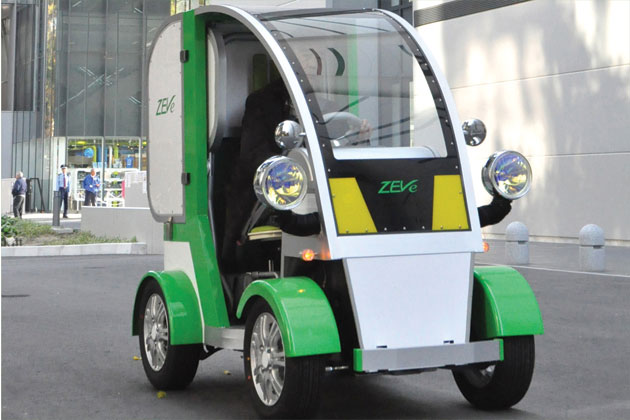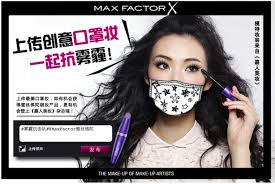Indian brands are reimagining content and the platforms for engaging them.
Anand Narang, marketing director, Huawei Consumer Business Group, India
In the past year, India has made it into many 'Top Five' lists for the first time. It has more than 215m internet users, and is expected to overtake the US by mid-2014 to become the world’s second-biggest user base; Facebook user numbers are above 100m; social phone-book app Truecaller has half its global base in India; there are 30m 3G users; LinkedIn professionals number more than 25m; and India is the world’s third-biggest smartphone market. That’s a lot of people creating and consuming content and services. Combined with India’s social, economic and political change, brands are imagining newer ways to connect and engage people.
Given the sizeable population of connected smartphone users, start-ups are giving older rivals a run for their money. Take taxi company Olacabs, which optimised its car-booking system to deliver quicker and superior consumer satisfaction. Its booking app gives users instant confirmations, reviews of drivers, car make, distance from location, smartphone-powered navigation and greener SMS-based instant billing. Traditional services had to rethink and follow.
Or look at India’s biggest ecommerce company, Flipkart, which reached $1bn turnover with innovative strategies like cash on delivery, user reviews, reliable logistics, a timely replacement policy and large portfolio. Creating a headache for established, offline retail, Flipkart recently launched its mobile-first strategy.
Empowering millions of Indians with mobile data connectivity, Idea Mobile recently launched a fun campaign. Using the line 'Don’t make a fool out of me… because I have the power of internet to cross-check', it has captured their imagination. And it’s not just brands that are embracing the millions of connected Indians. Political leaders used the power of social to connect during India’s recent general elections. Delhi elected a chief minister who dethroned the incumbent by taking his campaign social and on-ground. The AAP party collected donations from around the world via social media. Keeping this changing media landscape in mind, the 63-year old incoming Prime Minister, Narendra Modi, has become the most connected, socially active political leader in India.
Others are using the medium for innovative community initiatives. Attero, India’s biggest electronics waste recycling company, is recruiting children to be brand ambassadors for collection and spread awareness of recycling. Meanwhile, Raahgiri Days, an initiative by multiple brands, are intended to help the community reclaim city roads for safer and creative activities.
Bollywood, the world’s biggest movie factory, is now seeing the segmentation astute marketers would do. The author-turned-speaker-turned-screenwriter Chetan Bhagat inspired films in different genres, like the youthful 3 Idiots, social themes in Kai Po Che and inter-religion marriage in 2 States.
To quote Santosh Desai, managing director and chief executive of Futurebrands India: 'Brands consume change and reflect it.' I’d add: 'As some trend-setters drive change, good brands take it upon themselves to be catalysts for driving mass change.' Fuelled by consumers’ openness to hear relevant messages and connect in newer ways, brands in India are reimagining the content and platforms for engaging them.
Kunal Sinha, chief knowledge officer, Ogilvy & Mather, China
When a civilisation dating back to the Neolithic era becomes the playground for the world’s foremost architects – Zaha Hadid, Lord Foster and Rem Koolhaas, to name a few – and boasts the world’s biggest population of internet shoppers, questions about tradition and modernity are bound to be asked. In China, as soon as these questions arise, the answers come thick and fast, laden with perceptions and assumptions: the older generation is traditional, and the young are modern; people living in big cities are modern, those in small towns are traditional.
A nation of 1.4bn can’t be slotted into these easy, convenient generalisations, can it? Especially when the pace of change is so quick.
Six years ago, when we were visiting homes in small towns across China, some families were just beginning to decorate their living rooms – with traditional furniture and crafts. A big wedding portrait of the couple would be hung over the bed, with the man decked out in a tuxedo and the woman wearing a white gown. But when we went back recently, almost every middle-class home looked like a page out of an IKEA brochure: clean lines, pastel colours, colour-co-ordinated refrigerators.
'We looked up these designs on the internet, and asked a local interior designer to recreate the modern look,' they would say. So what happened to Chinese designs? 'Oh, that’s historic, and we think rich people in the big cities should be responsible for preserving it.' And the rich are indeed taking on this responsibility, as they buy up Ming dynasty bowls for tens of millions of dollars.
So not only are Western lifestyles very desirable to mass-market consumers, they also fit with some of the West’s social realities. Thanks to deep engagement with the internet, the Chinese have no problem recognising Leonardo DiCaprio when he endorses Oppo (a Chinese brand) home appliances. Chinese geeks love TV comedy series The Big Bang Theory – China has its own legion of socially inept young men, the diaosi – and the show has garnered more than 1bn views.
On the other hand, it means that luxury brands must find ways of recognising and showcasing Chinese culture and tradition, because the wealthy Chinese demand that they are recognised as much for their spending power as for their roots. Whether it is by employing Chinese-speaking salespeople at Galeries Lafayette and Harrods, or by infusing high-end products with Chinese design and motifs – as Louis Vuitton, Hermès, Ralph Lauren and Vacheron Constantin do – marketing to the wealthy Chinese demographic is about understanding their nuanced motivations and behaviour.
After all, it is only in China where will you find, on Singles Day (11 November – an annual ecommerce event), a woman from Zhejiang province buying a 13.33-carat diamond for $3.37m. If only that level of consumer confidence reigned everywhere.
Roy Larke visiting professor, Waikato University, and editor of JapanConsuming.com
Japan is one of the most creative markets in the world. Shops are stuffed with product of all kinds, and ranges have burgeoned over the past 20 years as overseas brands have discovered that Japan isn’t all that hard to work in after all. Marketers know they have to fight for attention, and consumers are constantly on the lookout for the new and unique – the core of what they call kawaii.
This extends even to FMCG categories. Few brands control more than a few percentage points of share, short-term fad products are common and competition to stand out is fierce.
High-quality and unusual packaging helps, but often isn’t enough. Drinks brands frequently offer surprisingly high-quality free gifts pinned to the top of cans that are popular with boys of all ages. Sometimes there are bizarre variants, such as Pepsi’s limited-edition cucumber flavour; Kirin’s soft-drink recipes, such as salt and litchi, which change quarterly; or even the now ubiquitous Green Tea Kit Kat.
Retailers have had to learn how to design brands that create their own distinction. The entry of global players has forced this evolution to happen faster. Brands such as Uniqlo in fashion and Aeon in, well, everything else have become fully fledged, vertically integrated retailers. Uniqlo, formerly a regional chain, has become one of the world’s top four apparel brands, largely through innovative marketing, branding and a willingness to try something new – backed by some of the biggest economies of scale of any apparel supply chain.
Ecommerce accounts for 8% of the ¥140tn retail market, and is likely to break 10% in 2015. With the average commute into Tokyo close to 90 minutes, smartphone users have a lot of browsing time. With competitive, efficient parcel-delivery services, orders made in the morning are ready in apartment mail lockers ready for commuters’ return home.
Girls routinely post 'fashion looks' – selfies of the latest additions to their wardrobes – and services such as iQon tie the photos to stores selling the pictured brands, for followers to buy. Japanese apps offer brand-recognition services, allowing users to snap a product and find the item online.
Japanese consumers have long been spoilt for choice; now they are equally spoilt for creative buying options, too.
 Town EV Japan: Ultra-compact car designed for older drivers
Town EV Japan: Ultra-compact car designed for older drivers
In September 2012, automotive brand Town EV unveiled the ZEVe, a single-seater, electric prototype vehicle designed to provide a convenient means of transport for older drivers. Priced at ¥800,000 (US$10,000), the ZEVe is a compact, aluminium-framed vehicle with a maximum speed of 50kph.
Nokia India: Mobile phone brand hosts online murder-mystery contest
To promote the launch of the Lumia 1020 handset, Nokia ran an interactive competition in India during December 2013 asking fans to solve a series of online murder mysteries. By logging into the competition website with a Facebook or Twitter account, users could become "Zoom Agents" and attempt to solve one of three different crimes. The first person to solve each murder won a Lumia 1020, with runners-up receiving Lumia 925 and 625 handsets.
Uber Taiwan: Taxi app promotes service with puppy delivery stunt
Last December, cab company Uber promoted its mobile app with a 'puppy delivery service'. For a NT$300 (US$12) donation, users were offered a 15-minute 'playtime' session with a puppy in a location of their choosing. All proceeds from the promotion went to the not-for-profit Taiwan Life Caring and Animal Rescue Organization.
Max Factor China: Beauty brand launches anti-smog competition
In February, Max Factor unveiled a campaign on social network Sina Weibo to find the best make-up looks to wear with an anti-pollution face mask. In the 'Smog-busters' competition, Chinese women were invited to upload photographs of their eye make-up while wearing one of the masks. The competition winner received Max Factor cosmetics and was featured in Marie Claire China.
This article originally appeared in Marketing. Read more from them in our Clubhouse.